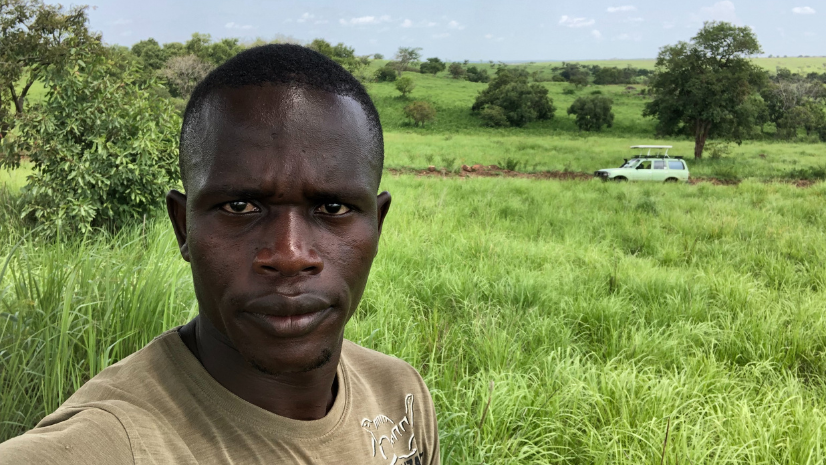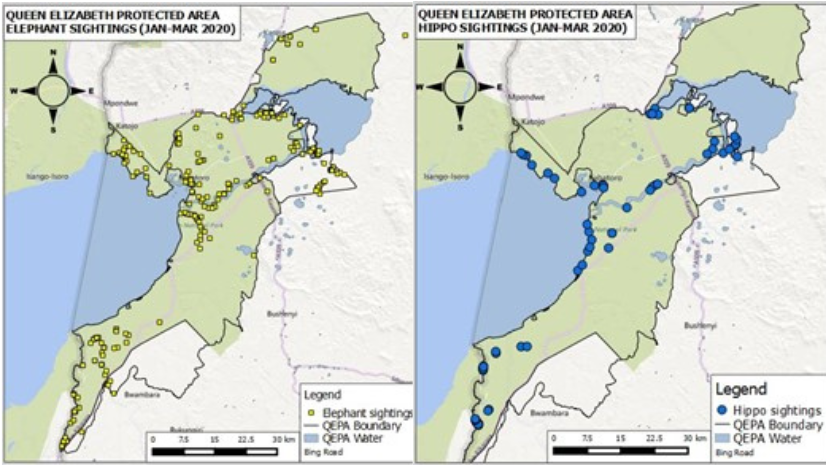Drileyo Gilbert: The GIS Trailblazer Transforming Uganda’s Wildlife Conservation Landscape
January 17, 2024 2024-01-17 12:55Drileyo Gilbert: The GIS Trailblazer Transforming Uganda’s Wildlife Conservation Landscape
Drileyo Gilbert: The GIS Trailblazer Transforming Uganda’s Wildlife Conservation Landscape
The Esri Young Professionals Network (YPN) is shedding light on the impactful stories of geospatial technology enthusiasts through its new series, Faces of YPN. In this edition, we focus on Drileyo Gilbert, a wildlife biologist and research scientist at the Uganda Wildlife Research & Training Institute. Gilbert shares his experiences, highlighting the crucial role of Geographic Information Systems (GIS) in wildlife conservation efforts.

Drileyo Gilbert’s journey with GIS
Gilbert’s passion for GIS did not evolve overnight but through dedication, determination, and hard work. Despite limited exposure to training opportunities and financial constraints, he embraced GIS during his time at the Uganda Wildlife Research & Training Institute pursuing a Diploma course in wildlife & natural resource management from 2014-2016, and as a conservation volunteer at Queen Elizabeth National Park. Through hands-on experiences with SMART conservation software and the EarthRanger Application, Gilbert honed his skills, setting the foundation for his GIS journey.
Education and skill development
During his pursuit of a diploma in wildlife & natural resource management (2014-2016), GIS was part of Gilbert’s curriculum, albeit with limited practical exposure. Subsequently, at Makerere University Faculty of Veterinary Medicine (2017-2020), he actively sought GIS-related training within the university, earning several certificates. Dr. Gilbert also organized GIS training courses for fellow students, fostering social networks and collaborative learning.

GIS applications in conservation
Gilbert primarily utilizes ArcGIS software for various spatial analyses, including mapping species distribution, monitoring vegetation changes through remote sensing, network analysis, occupancy modeling, terrain analysis, and wildlife movement mapping with telemetry data. His specialization in African lion research involves GIS applications such as habitat suitability mapping, home range estimation, and threat mapping for wire snare poaching.

Notable GIS Projects
Among his projects, Gilbert’s undergraduate research focused on mapping the spatial distribution of wire snares and associated risk determinants in Queen Elizabeth National Park. Subsequent projects involved invasive species mapping, wildlife species mapping with ranger patrol data, and conducting GIS training sessions for students at the Uganda Wildlife Research & Training Institute.

Recommendations for Young Professionals
Gilbert emphasizes hands-on GIS training by experienced mentors and advocates enrolling in applied GIS courses at recognized institutions to enhance skills. Furthermore, he acknowledges the influence of mentors such as Dr. Margaret Driciru, Mr. Fredrick Wanyama, Mr. Bazil Alidria, Dr. Alexander Braczkowski, Dr. Tutilo Mudumba, and Mr. Mustafa Nsubuga in shaping his GIS journey.
Esri YPN’s Impact
As a newcomer to Esri YPN, Gilbert, expresses excitement about the opportunity to connect with the GIS community. He sees this engagement as a stepping-stone to further his conservation career with a GIS and Remote Sensing specialization.

Advice for Young Professionals
In his parting words, Gilbert encourages young professionals to recognize the significance of geospatial technology in addressing global challenges. He believes that investing efforts in GIS can empower individuals to become future change-makers, contributing to spatial problem-solving and influencing governmental decisions in a world grappling with climatic changes, epidemics, and political instabilities.
Drileyo Gilbert’s journey exemplifies the transformative power of GIS in wildlife conservation. His story serves as inspiration for young professionals aspiring to make a positive impact in the world through geospatial technology.
This article was first published by Alexa Vlahakis. View full story here: https://bit.ly/48yQaw3







